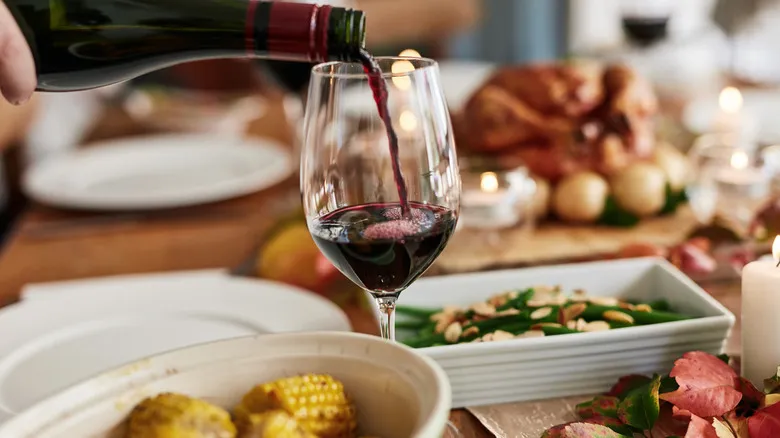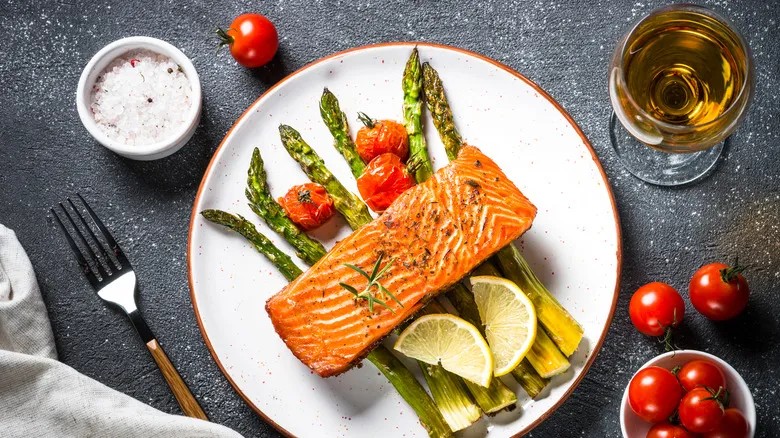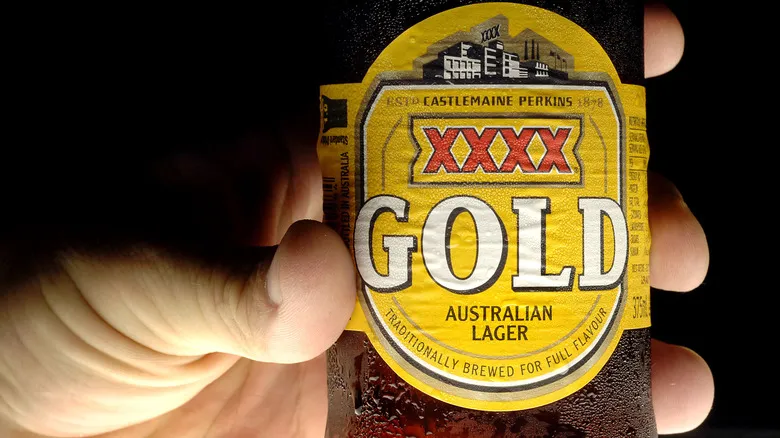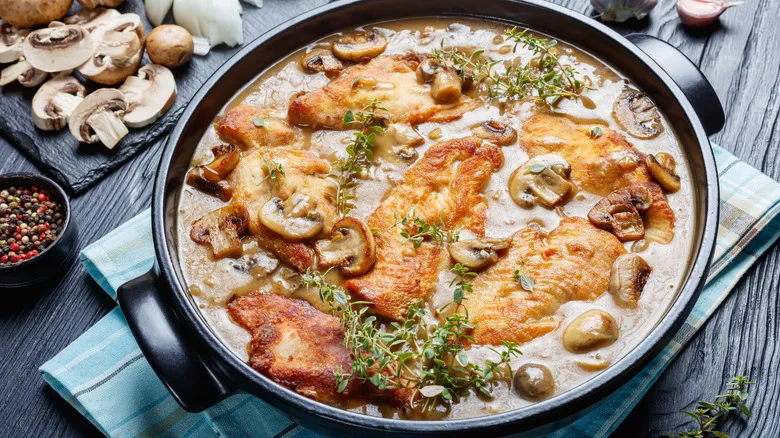Avoid heavy reds

Tannins in wine are responsible for that dry, scrubbing sensation on your tongue after sipping. These compounds are mainly derived from the grape skins during fermentation, contributing to the wine's body, texture, and flavor. When it comes to food pairings, salt can help mellow out tannins, making it ideal to enjoy tannic wines alongside naturally salty dishes. This is why a robust cabernet sauvignon, rich in tannins, pairs well with a salty steak, or a syrah complements well-seasoned grilled duck.
On the other hand, fish is more delicate and doesn't need as much salt as heavier proteins, which is why it's best to avoid pairing most fish dishes with tannic red wines. It's also important to match the wine's intensity and flavor with that of the food. A bold red can easily overshadow a subtle salmon dish, while a high-acid, lighter red allows the fish to take center stage.
For instance, a pomegranate-glazed salmon would pair beautifully with a Lambrusco, a vibrant and sparkling red wine from Italy. This wine provides sufficient acidity to enhance the pomegranate flavors without overwhelming the salmon.
Experiment with pairings

Exploring wine also means letting go of preconceived notions. Experiment with pairings that may seem unconventional. If the chance arises, consider trying a salmon dish with a robust, tannin-rich red wine. Pay attention to how the fish's light oils coat your palate. Then, take a sip of the bold red. Notice how the strong tannins can overwhelm your palate, masking the fish's flavors entirely, and perhaps even leaving a metallic sensation.
Next, conduct the same experiment using a lighter-bodied red with softer tannins, like a Pinot Noir from Burgundy. The wine's floral and red fruit characteristics will enhance the salmon's flavor, while the gentle tannins will allow the dish to shine. Most importantly, the wine's acidity will cut through the richness of the fish, creating a refreshing experience.
The ideal wine pairing will also depend on how the salmon is prepared and the accompanying sauce. A lightly baked salmon will pair well with a more delicate wine, while a grilled salmon with smoky notes will suit a fruitier, fuller-bodied wine, but avoid those with heavy tannins. It’s all about finding the right balance.
Ultimately, it comes down to personal preference. Everyone's taste buds are unique, and there are no wrong choices. Discovering what you enjoy is a crucial part of the journey, and it comes with practice and exploration. Don’t hesitate to try various combinations and learn—or unlearn—as you go. Cheers!
Recommended

What Is XXXX Beer? Australia's Pride And Joy Explained

15 Breweries Beer Lovers Need To Tour Around The US

The Absolute Best Type Of Wine To Drink With Chicken Marsala

How Long Sake Will Still Taste Good After Opening
Next up

